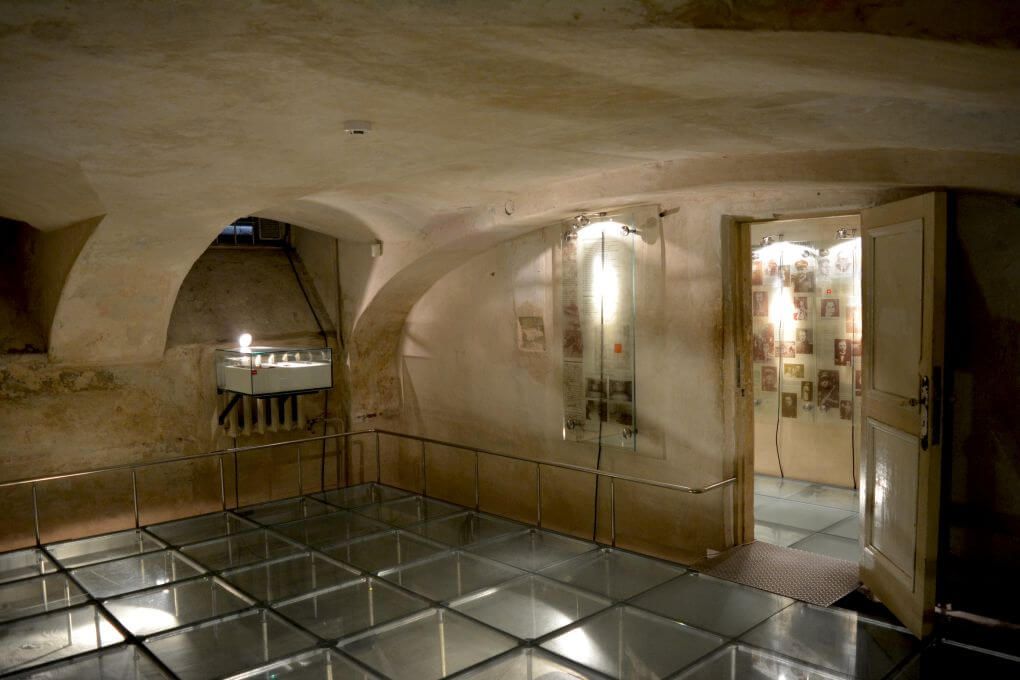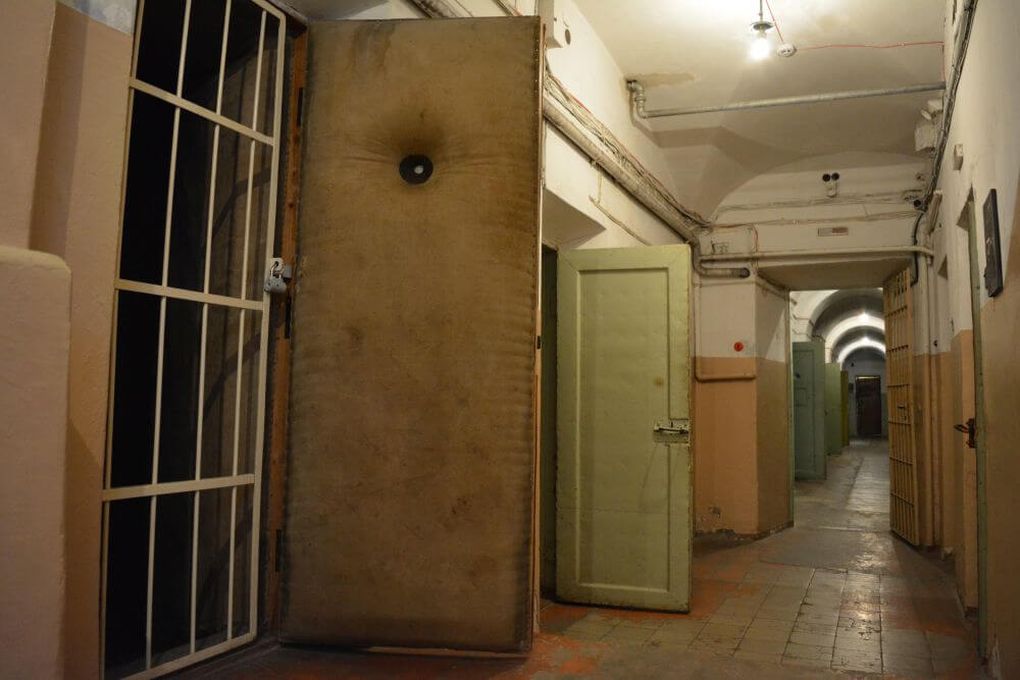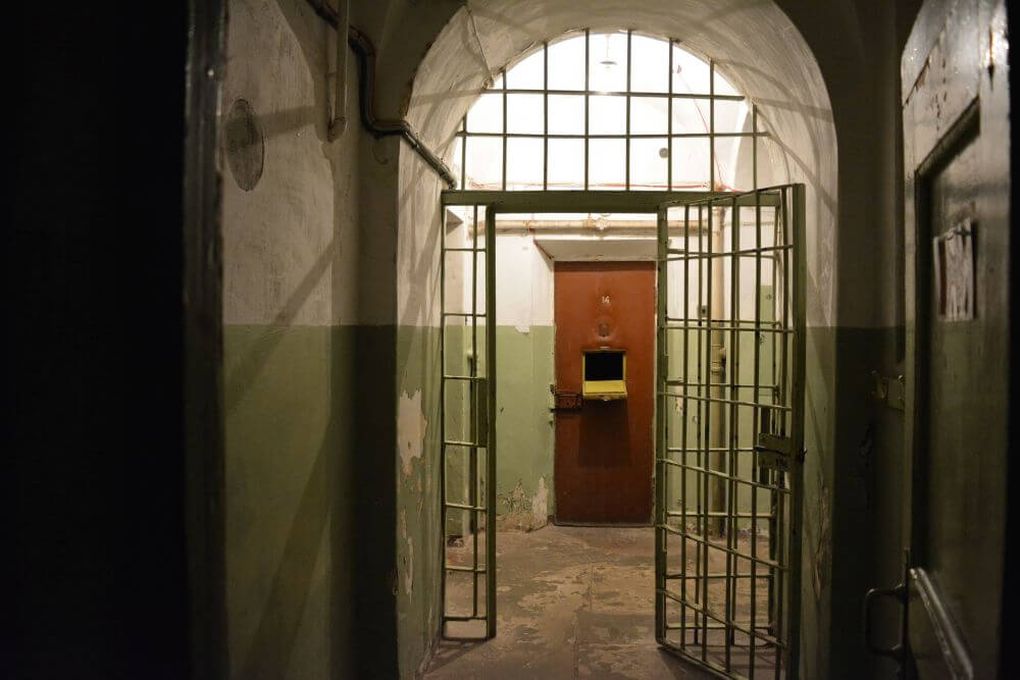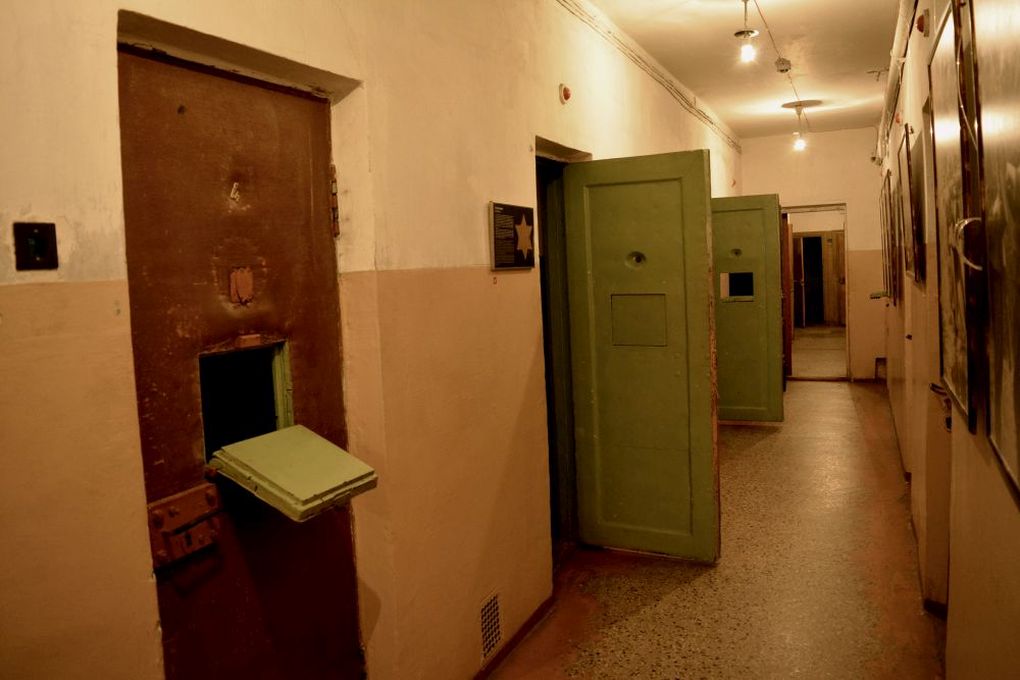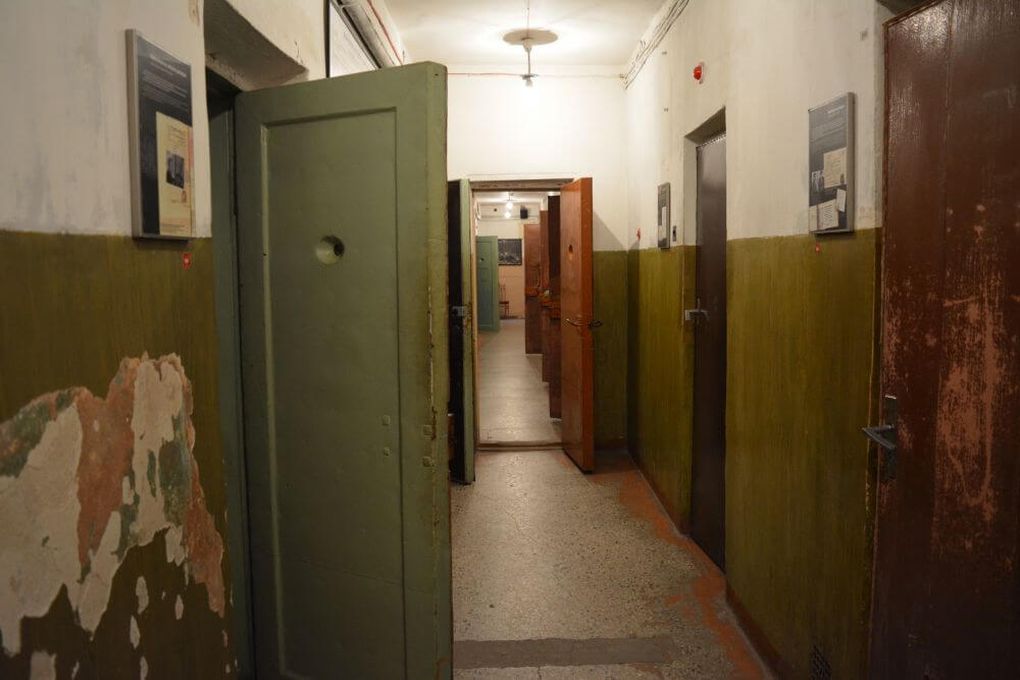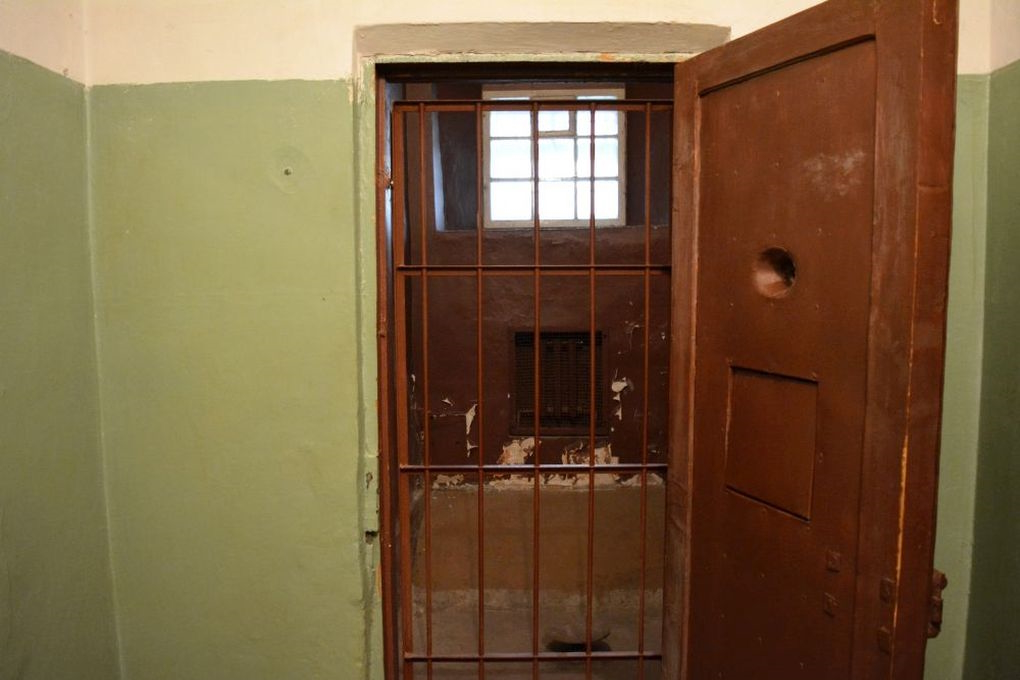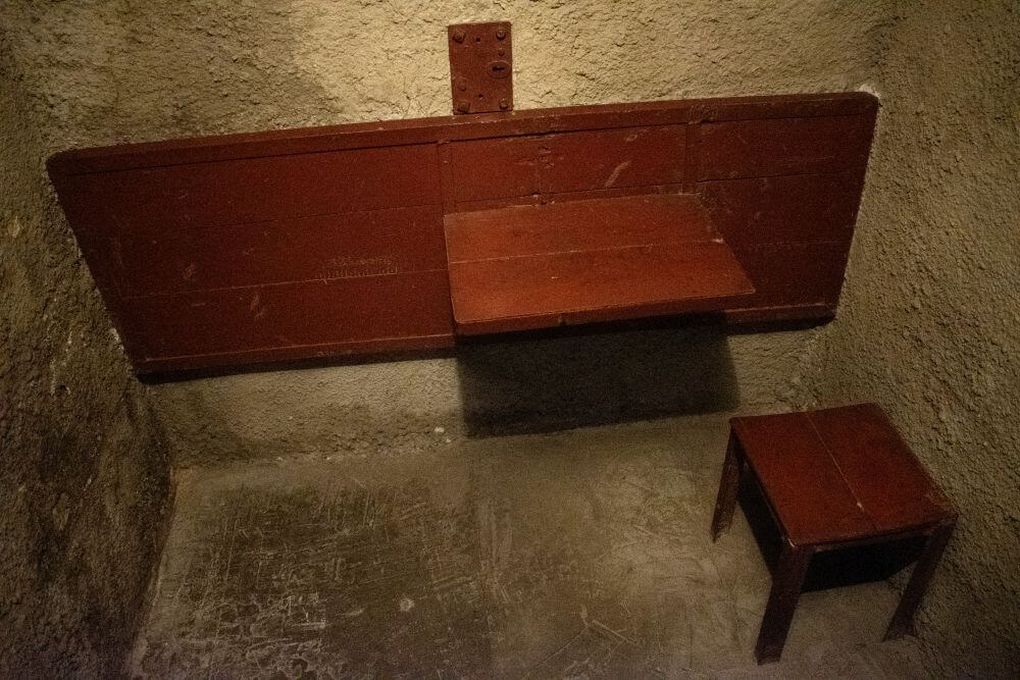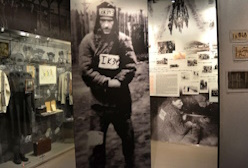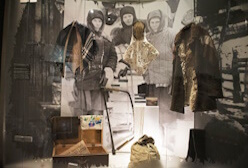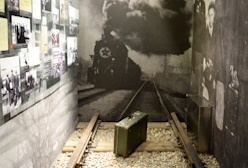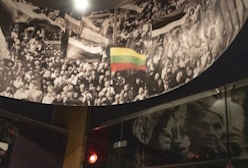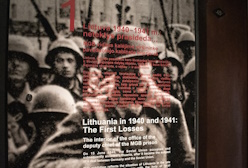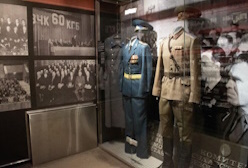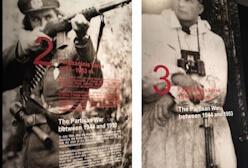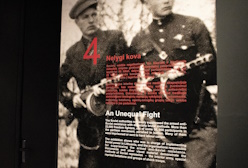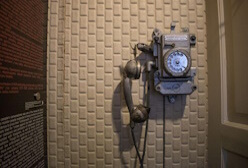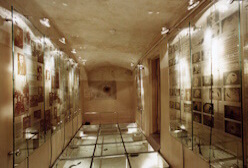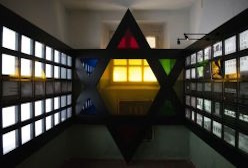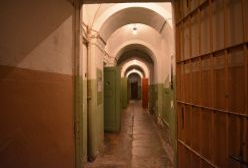The KGB prison
VII – 10:00-17:00
Pupils, students and pensioners (with ID) – 3 €.
Main information
On 15 June 1940, the Soviet Union marched its troops into the territory of the state of Lithuania and thus began the occupation of the country. From the first day of the occupation, the systematic demolition of the foundations of Lithuanian statehood began, alongside the persecution and arrest of peaceful residents. The normal rhythm of life was replaced by days of tension and anxiety.
In autumn 1940, the Vilnius Board of the NKVD was set up in the former courthouse, and a prison/remand prison was put in the basement. The prison cells are still just as they were found in August 1991 when the KGB left Lithuania. Today, they look nothing like they did when the freedom fighters and dissidents were imprisoned and tortured there starting in the 1940s.
The prison was repainted and repaired numerous times (as many as 18 layers of paint have been uncovered), and the number of prison cells was reduced (from more than 50 cells in 1964 to 23, and later – 19). However, its bleak, cold dungeons allow us to at least partially imagine the fate of the people who were imprisoned there.
Exposition descriptions
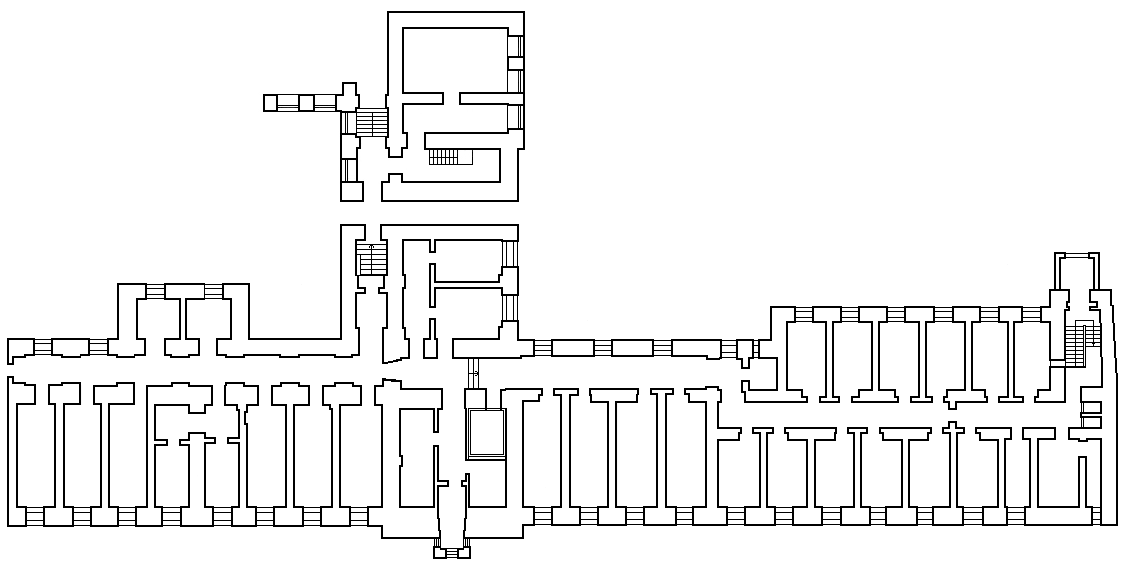
Execution chamber
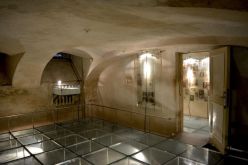
Exercise yards
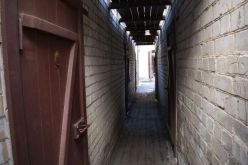
Solitary confinement cell
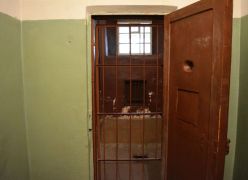
Corridor
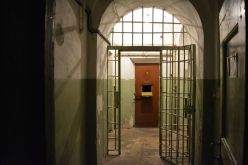
Padded cell
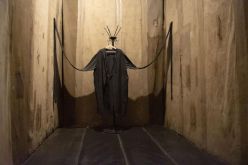
Corridor
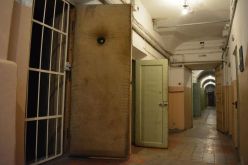
Cell No 11
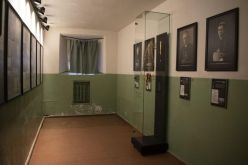
Solitary confinement cell
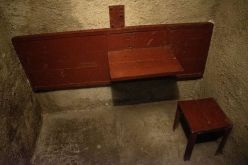
Cell No 9
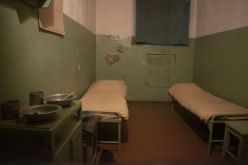
Corridor
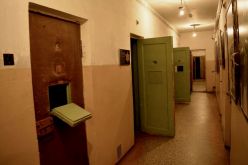
The Nazi occupation and Holocaust in Lithuania
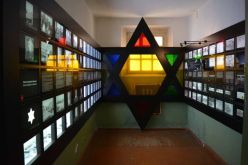
Cell No 5
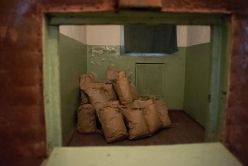
Photography and fingerprinting room
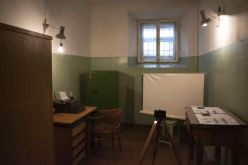
Body search room
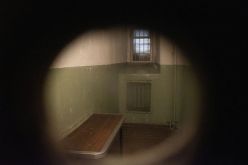
Corridor
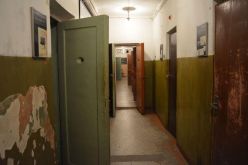
Thel boxes
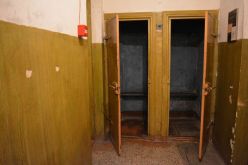
Duty officer’s room
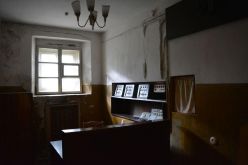
Guard room
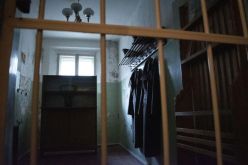
Cell No 1
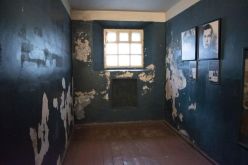
- Thel boxes
- Photography and fingerprinting room
- Duty officer’s room
- Guard room
- Body search room
- Solitary confinement cell
- Padded cell
- Cell No 1
- Cell No 5
- Cell No 9
- Cell No 11
- Exercise yards
- The Nazi occupation and Holocaust in Lithuania
- Execution chamber
- Kalėjimo boksai
Thel boxes
These are small, 1.6 m2 cells. They were used to hold detainees while the officer on duty processed their documents. These boxes were added in the early 1960s. The previous holding cells were even smaller. Detainees could only stand in the boxes. As former detainees recall, there were similar boxes in the second- and third-floor stairwells. If necessary, the detainees were shoved into the boxes to keep them from seeing others who were being taken for interrogation.
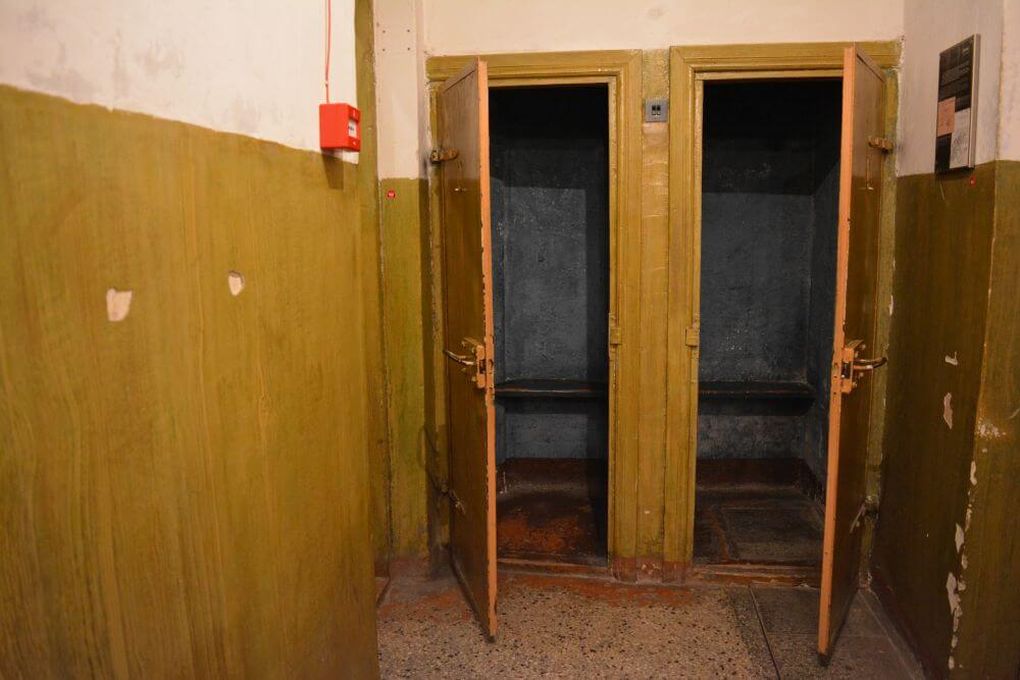

- Fotografavimo ir pirštų atspaudų ėmimo kambarys
Photography and fingerprinting room
In this room, detainees were issued ID cards and their details were taken down. They were photographed and their fingerprints were taken. On display are authentic items that were used in the last decades of the prison’s existence.
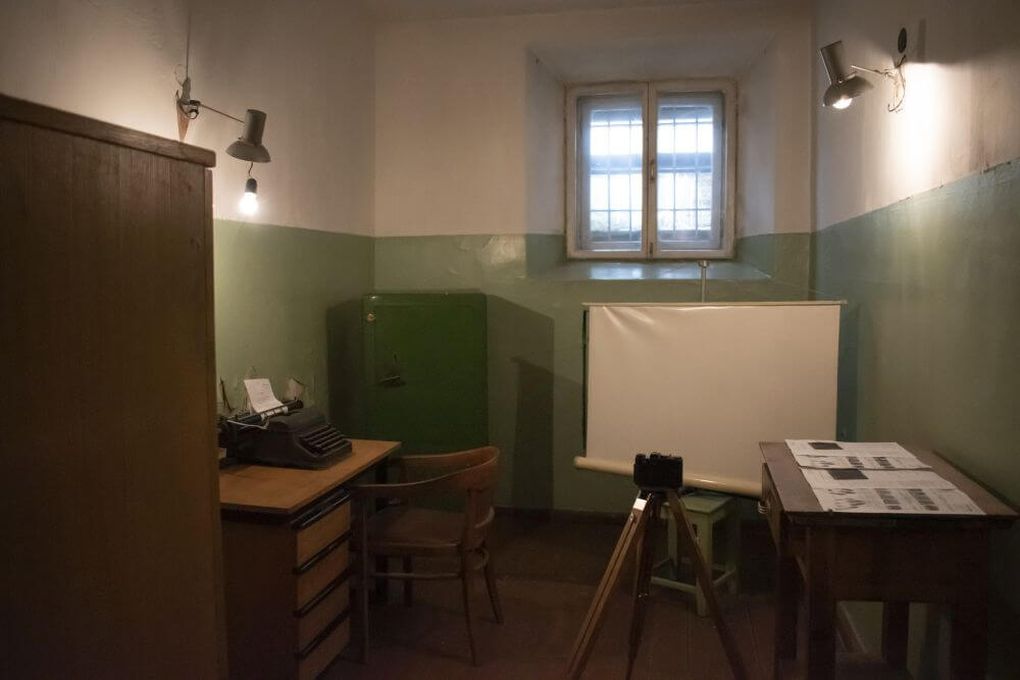

- Budėtojo kabinetas
Duty officer’s room
This is where the officer on duty accepted the detainee’s documents and filled out the necessary forms. In 1975, the central monitoring console that is still there today was installed. The officer could contact the guard posts, interrogators and city institutions. In case of danger, he would activate the alarm. There was a small window for monitoring people entering the prison and checking their permits.
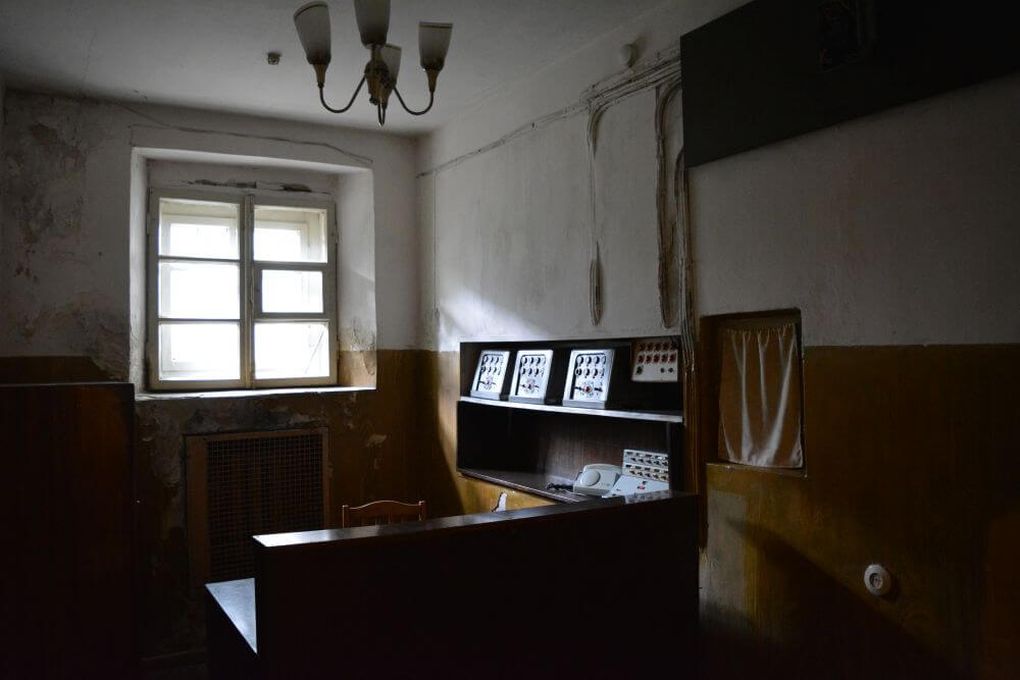

- Sargybos kambarys
Guard room
This was meant to be a lounge for the jail staff, and was also where “political education” classes were held to explain the basics of Marxism-Leninism to the guards. The uniforms of a KGB lieutenant and senior lieutenant are hanging on the rack. Although they changed several times, the hat still has the blue ribbon indicating affiliation with this secret service. There is a scale by the back wall, which was used to weigh the food brought by relatives to make sure that it was not over the permissible limit. Parcels were not always allowed, and for some detainees they were off limits altogether. The interrogator could deprive them of this right at his own discretion.
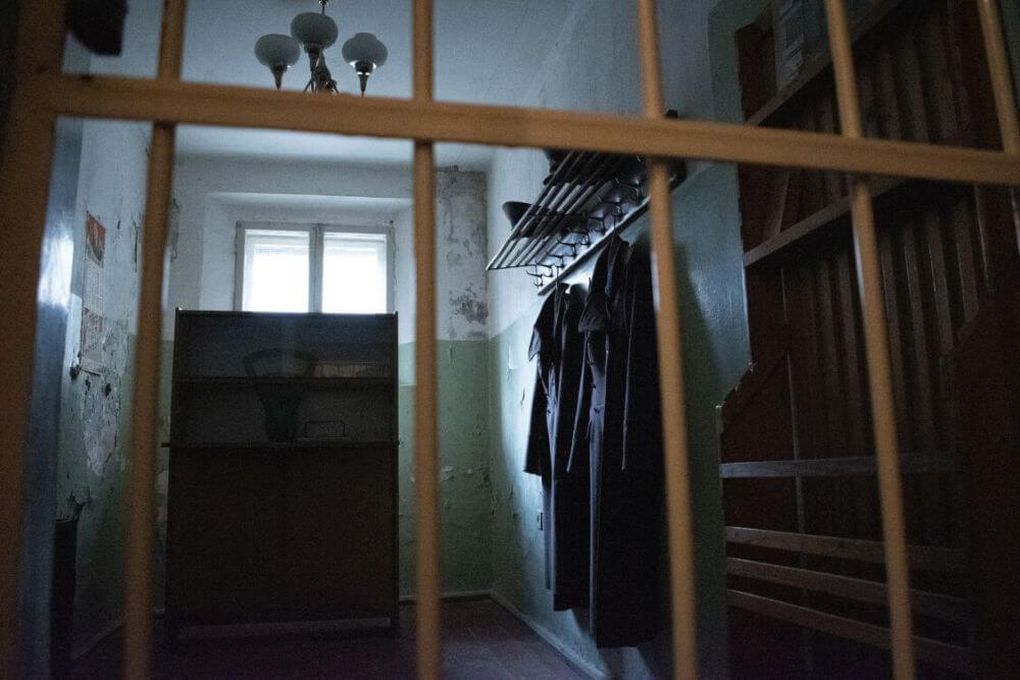

- Kratos kamera
Body search room
In this room, detainees were stripped naked and thoroughly searched. Almost everything was taken from them, including pencils, ties, belts and shoelaces – even metal buttons were cut from their clothes. This was done to prevent the prisoners from conveying a message about themselves, scratching something into the wall, or committing suicide if they could no longer stand the torture. Upon completion of the search, a search protocol was drawn up. It was signed by the warden who conducted the search and the detainee. Prisoners usually never got their more expensive items back.
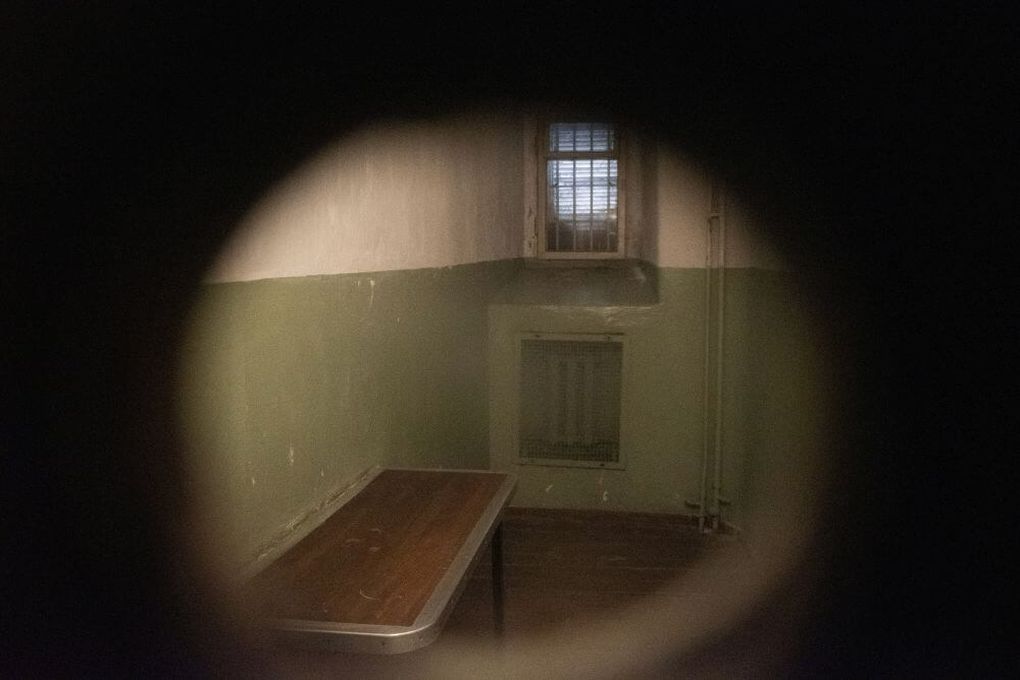

- Karceriai
Solitary confinement cell
In the post-war years, there were several of these cells, but only one survived until 1991. Prisoners were given solitary confinement for not following prison rules, for example – for trying to take a nap during the day or using Morse code to communicate with prisoners in neighbouring cells. Detainees who refused to cooperate with interrogators were also given solitary confinement. In the post-war years, detainees were kept in unheated solitary confinement cells in only their underwear, and were given a mere 200-300 grams of bread and 0.5 litres of water per day. They were only allowed to sleep until 5 am, and were not taken out for exercise. The cold, hunger and fatigue were meant to break the prisoners physically.
The conditions were even worse in the so-called “water cells”, where prisoners had to either stand in ice water (or on ice in winter) or balance on a platform. As soon as they fell asleep, they fell into the water. The water cells were installed around 1945 and taken out in the 1950s. One of them was turned into a medical office, and the other became the jail library. These cells have not survived to our day, but we know about them from the stories of the prisoners. While fixing the heating system in 1996, the solitary confinement cells were discovered and restored.
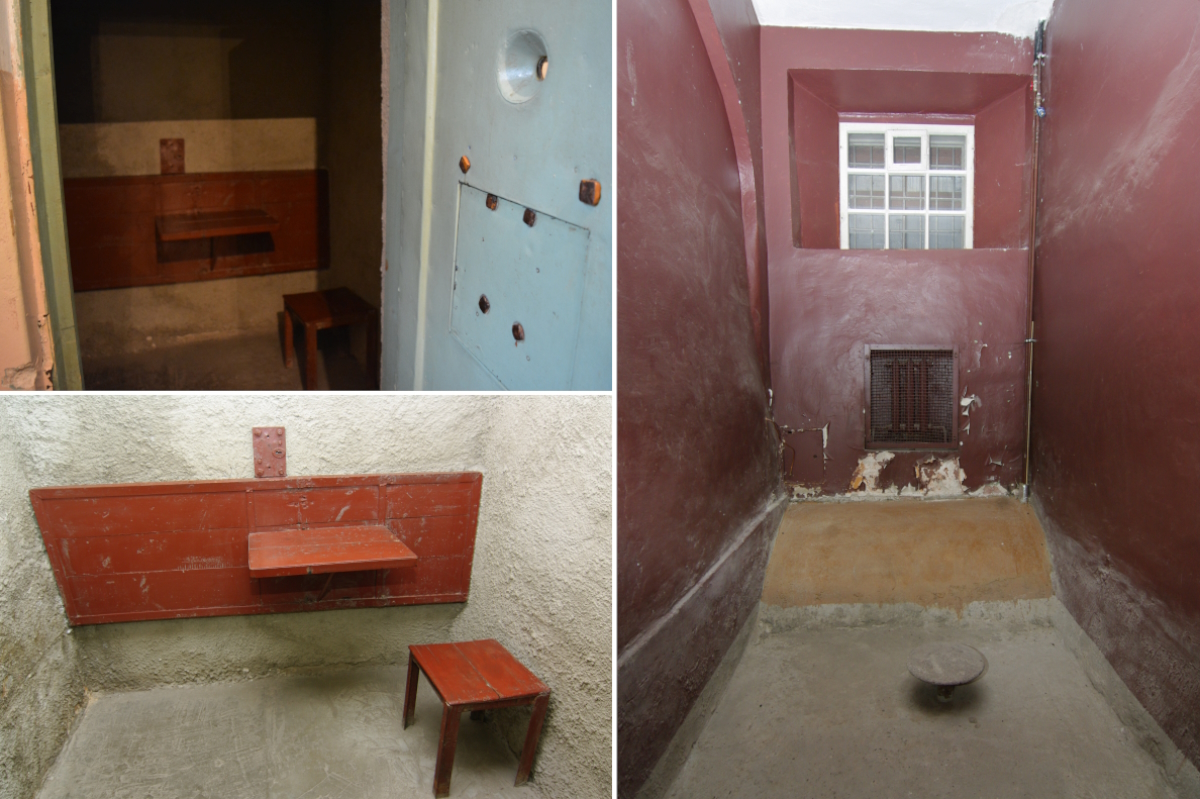

- Minkštoji kamera
Padded cell
This is one of the gloomiest places in the jail. Its walls are padded and soundproof. A straitjacket is on display by the back wall. It was put on prisoners who were resisting or mentally exhausted. Their screams and cries for help were absorbed by the walls.
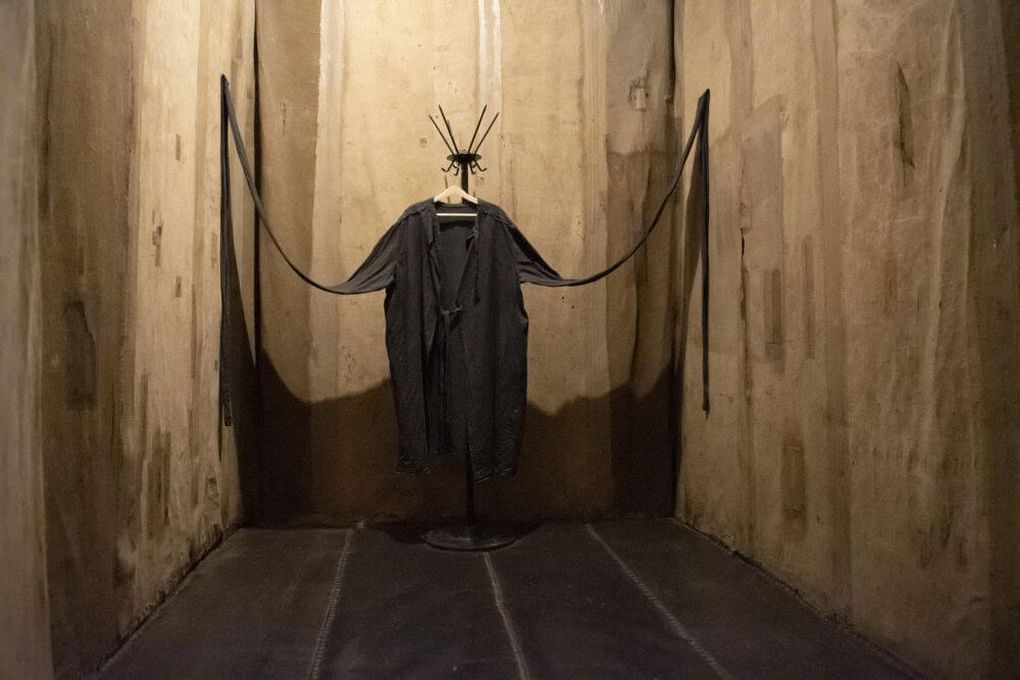

- Kamera Nr. 1
Cell No 1
This is one of the smaller cells. In prison documents, they were called single cells, but in the post-war years, they were used to hold up to 15 people. In 1944–1947, there was no furniture in the cells at all. Detainees would lean against the wall or spread their clothes on the floor to sleep. The floors in most of the cells were cement. In the corner of the cell, there is a plastic bowl (in the post-war years they were metal) that the prisoners were forced to use to relieve themselves. During Stalin’s regime, detainees were only taken to the toilet once a day. The bowl was also only emptied once a day. Until then, the prisoners were forced to live with the stench. The light was always on in all the cells. Detainees were not allowed to sleep between 7 am and 10 pm. During the Stalin era, detainees were taken out for interrogation at night. This was one of the most commonly used methods of torture – driving people to exhaustion by not allowing them to rest.
Polychrome studies conducted on the cell show that it was repainted as many as 18 times. This was done not for the sake of hygiene, but to hide the messages left by the prisoners. The current colour of the cell is one of the oldest – this is how the prison was painted when it was established.


- Kamera Nr. 5
Cell No 5
Bags of shredded documents are on display in this cell. These documents were destroyed by KGB officers in 1990–1991, before moving out of the building. Some of the documents were torn up, burned, or taken to Russian archives. Still, quite a few documents (over 200,000 volumes) survived and are now stored in the Lithuanian Special Archives.
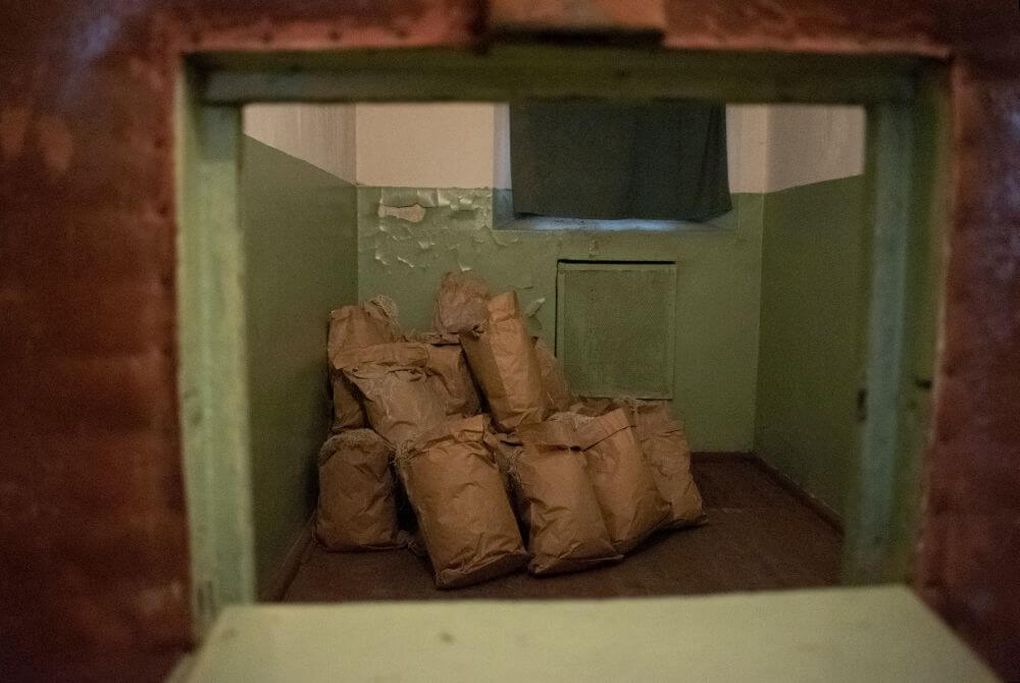

- Kamera Nr. 9
Cell No 9
This is what the cells looked like from the 1960s to the 1980s. The armed anti-Soviet resistance had already been broken by then, but dissidents and human rights activists continued to be locked up in the KGB prison. At that time, prisoners received something of a blanket, a pillow and a bed sheet. In the cell, authentic dishes are displayed on a cabinet, and on the bed there is a prison uniform, which was given to the museum by Monsignor Alfonsas Svarinskas, who did time in this prison. These uniforms were worn by death row prisoners and convicts serving their sentences in MVD special camps. In the KGB prison, where detainees were only held until their “trial”, the prisoners wore their own clothes.
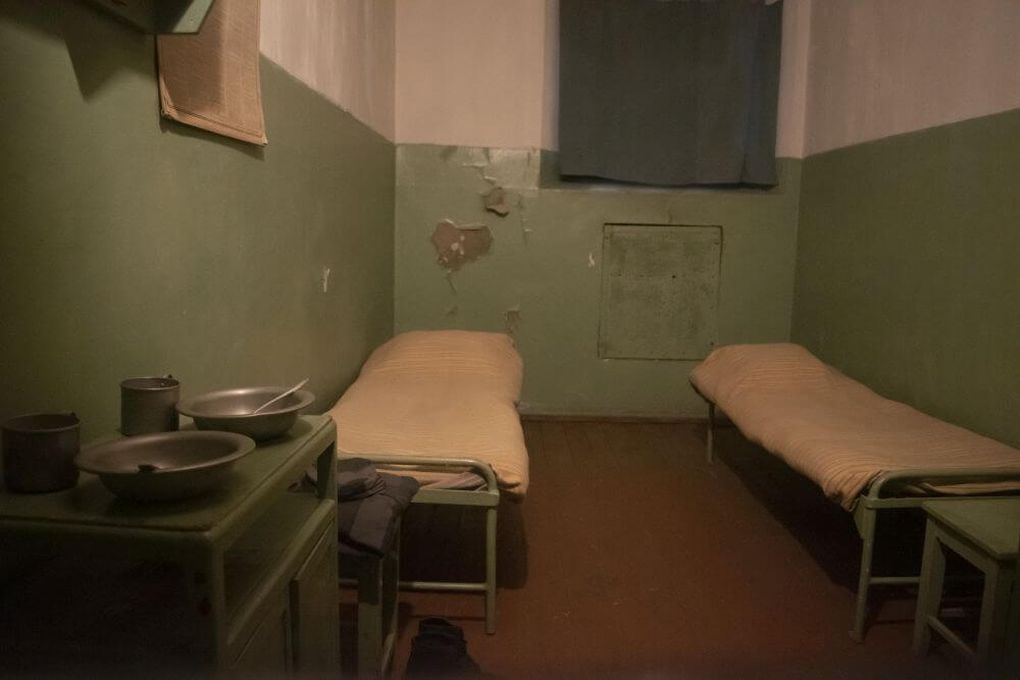

- Kamera Nr. 11
Cell No 11
The exhibition “For God and the Fatherland”, which is dedicated to the repressed clergy of the Catholic Church of Lithuania, is on display in this cell. Some of them were accused of participating in the partisan war, aiding partisans or providing religious services, but most of them were accused of anti-Soviet propaganda. In total, about 20 per cent of the clergy were repressed during the Soviet occupation, and about 30 per cent had a record.
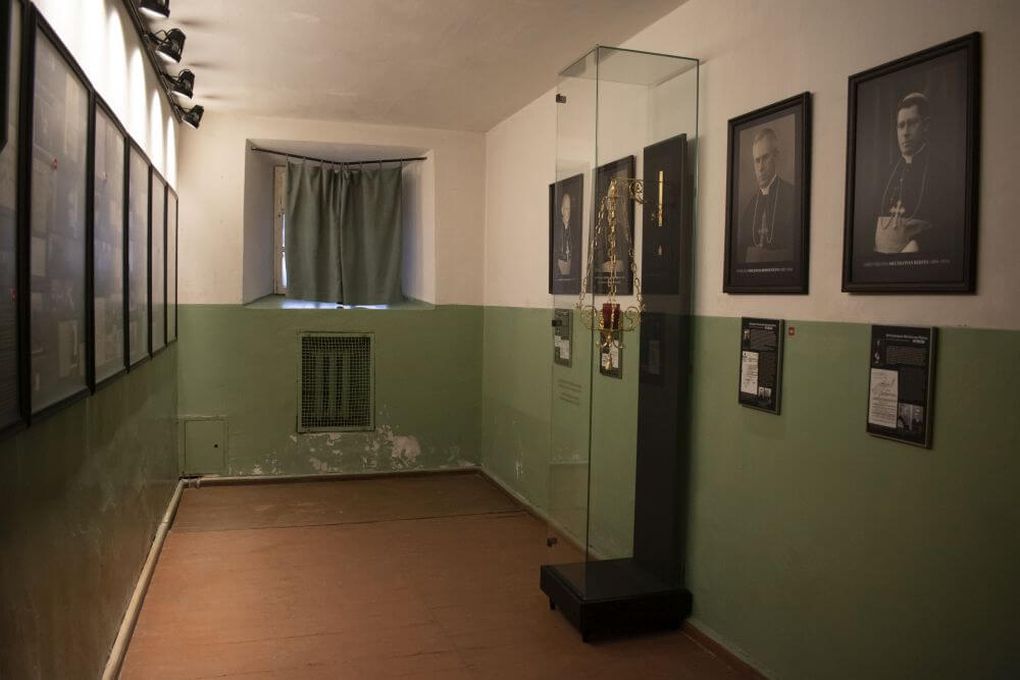

- Pasivaikščiojimo kiemeliai
Exercise yards
After going outside, you can see the exercise yards for the detainees. They were rebuilt several times. The previous ones (which have not survived) were in the left courtyard of the prison. The walls of the yards were 3 metres high. There was barbed wire stretched on top of the boards. During Stalin’s regime, prisoners were allowed to exercise 10–15 minutes per day. As the number of cells was gradually reduced, the exercise yards were moved to the right courtyard. The current ones were completed in 1969. Over time, the time permitted for exercise increased to an hour. When they were taken out for a walk, the detainees were always vigilantly guarded.
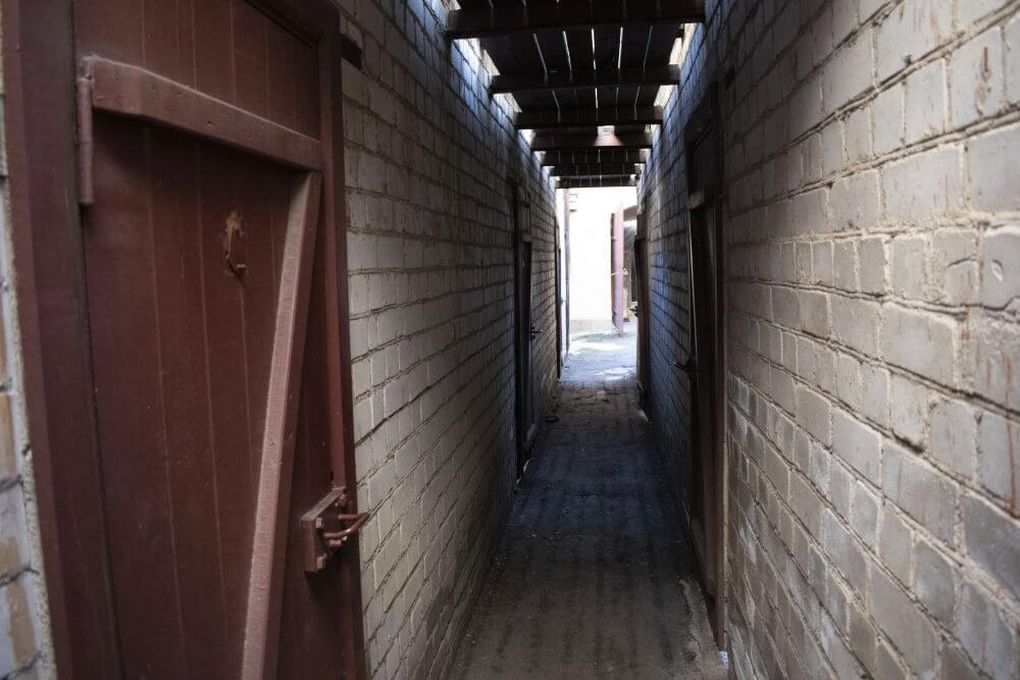

- Nacių okupacija ir holokaustas Lietuvoje
The Nazi occupation and Holocaust in Lithuania
Exhibition pageThe exhibition is located in the 3rd cell of the former KGB prison, where there is still writing on the walls that people who were imprisoned in this building by the Gestapo during the Nazi occupation wrote in 1942–1944. The exhibition in this small space sheds light on the Nazi occupation of Lithuania – the Gestapo prison and its prisoners, the history of the Vilnius Ghetto, and the mass murder site in Paneriai. Visitors can become acquainted with the exploratory research that was commissioned by the Genocide and Resistance Research Centre of Lithuania to be carried out in a forest park in the Paneriai forestry district in 2008. In the exhibition, an honourable place is given to the Righteous Among the Nations – Lithuanian Gentiles who rescued Jews during the Holocaust. Įkaitai. 1941 m. liepa (“Hostages. July 1941”) – a documentary film created by director Algis Kuzmickas for this exhibition – is shown on a screen.
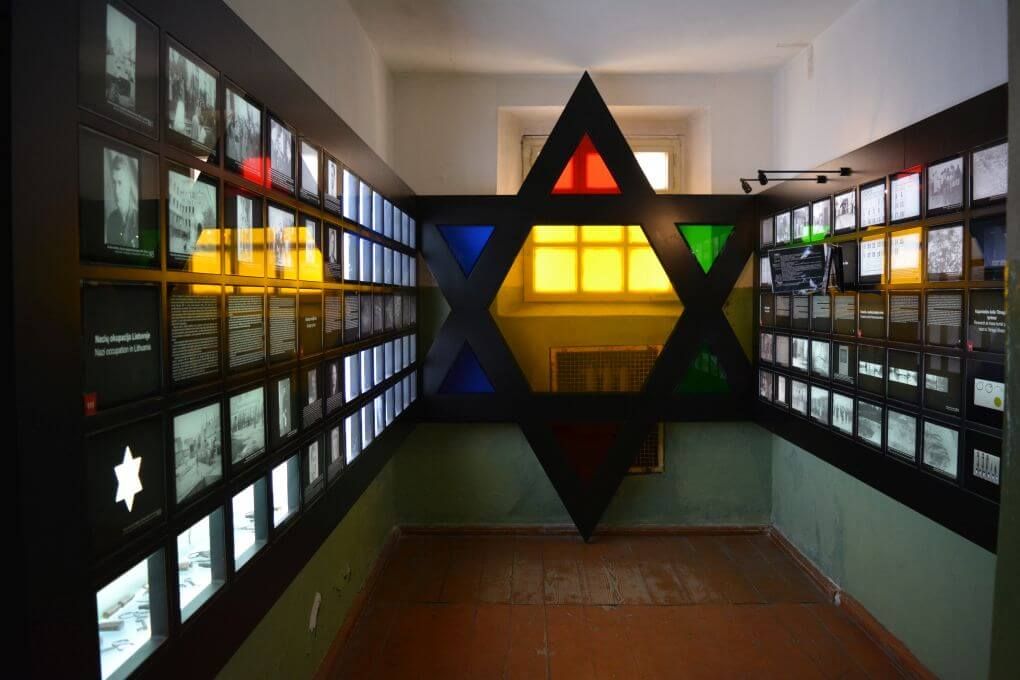

- Šaudymo kamera
Execution chamber
Exhibition pageFrom 28 September 1944 to 19 June 1969, more than a thousand people were shot in the execution chamber that was set up in the basement of the KGB headquarters. About a third of them were sentenced to death by Soviet courts or the so-called “troika” for their participation in the anti-Soviet resistance.
Very few archival documents about how the death penalty was carried out have survived. It is known that the executions were carried out by a highly classified special group of security officers that belonged to Section “A”. Death sentences were carried out at night. Up to 45 convicts could be executed in a single night. After the execution, the corpses were stacked in the same room behind a wooden partition, and then later taken by lorry to the burial site. The remains of 767 people who were shot in 1944–1947 were buried almost in the centre of Vilnius – in Tuskulėnai.
It is not known for certain where the remains are buried of the people who were shot in 1950–1952, when the death penalty was reinstated in the Soviet Union. There are believed to be numerous unknown grave sites within a 30 km radius of Vilnius.
In the third period, 1956–1969, the remains of those shot were secretly buried in Vilnius Antakalnis Orphans’ Cemetery, among the old graves. Some of them were discovered during archaeological excavations in 2017–2021, including the remains of one of the most prominent partisan commanders, Adolfas Ramanauskas-Vanagas. Investigations are ongoing.
When the execution of death sentences was transferred from Vilnius to Minsk, a carpentry workshop was set up in the execution chamber in the 1970s where KGB building inventory was repaired. The exhibition was opened on 24 June 2000. Items that were found in Tuskulėnai and in the execution chamber itself are on display, as well as photos and documents from archival files and museum collections.
